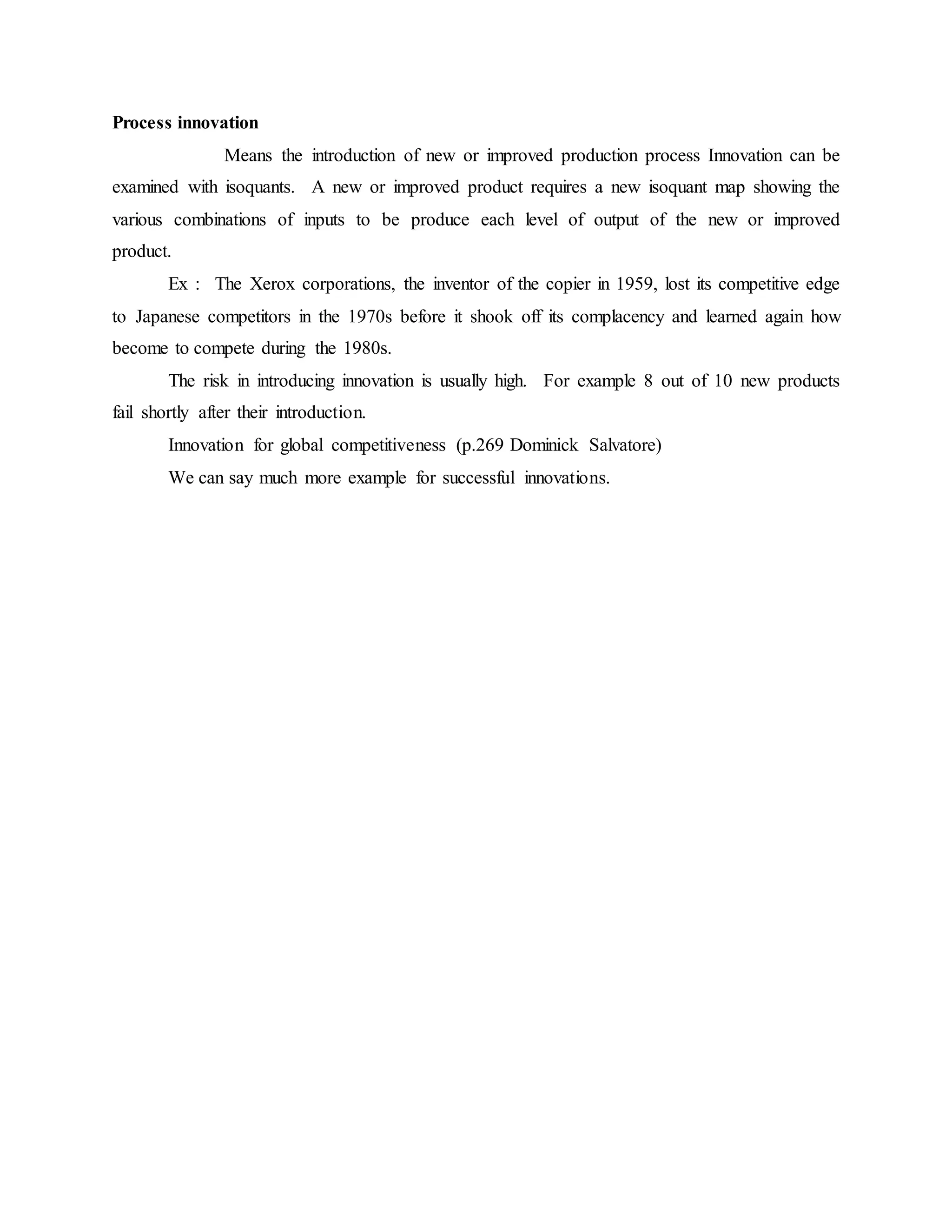Production involves using inputs like capital, labor, and machinery to produce outputs. There are fixed and variable inputs. The production function expresses the relationship between inputs and outputs, showing the maximum output possible given inputs. It can take various forms like linear or cubic. There are assumptions for production functions like constant technology. In the short run, there are three stages of production depending on input levels. The long run production function shows returns to scale like increasing, decreasing, or constant based on output changes from input changes. Economies of scale can result from larger scale production.













